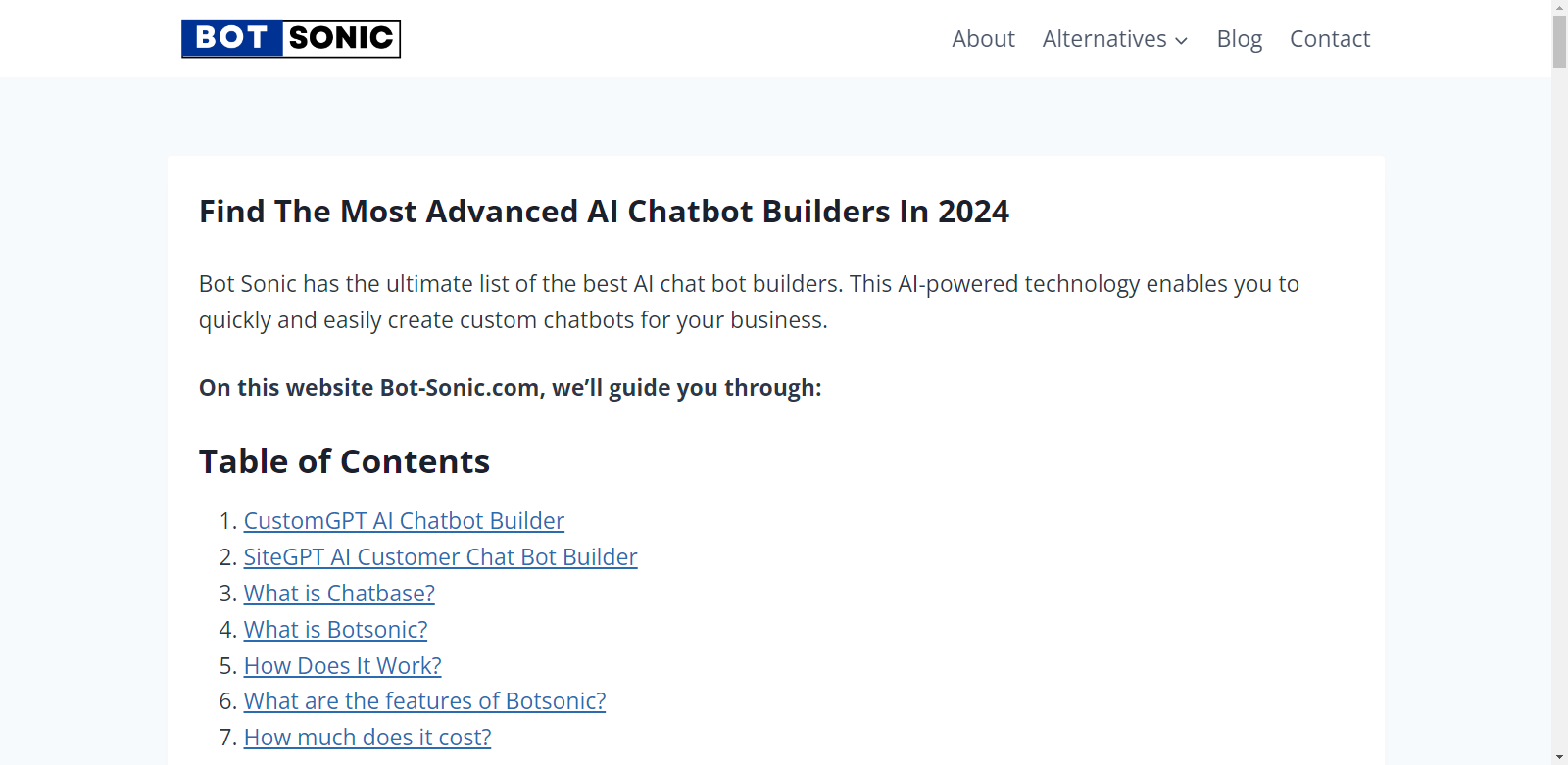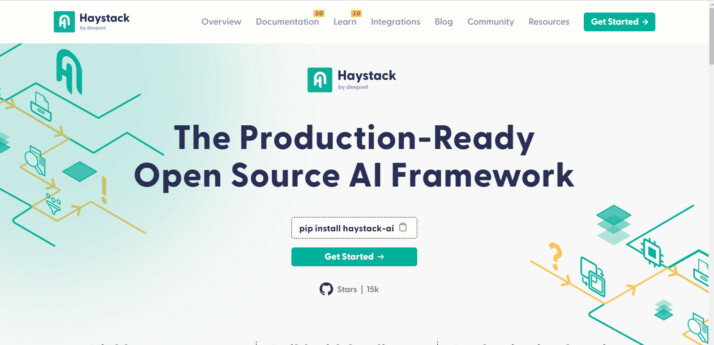Botsonic/Writesonic vs. Haystack: AI Tools Compared
AI-powered solutions revolutionize how businesses engage customers and process information. This comparison explores Botsonic/Writesonic’s user-friendly chatbot builder and Haystack’s flexible NLP framework, examining their strengths, limitations, and ideal use cases. We’ll evaluate key features, ease of use, and development capabilities to help you choose the right tool for your AI needs.
Whether you’re a non-technical business user or an experienced developer, this analysis provides insights to guide your decision-making process. We’ll also introduce SmythOS, a comprehensive platform that combines rapid development with advanced AI capabilities, offering a powerful alternative for organizations seeking versatility and scalability in their AI solutions.
Botsonic/Writesonic Overview
Botsonic/Writesonic empowers businesses to create intelligent chatbots without coding expertise. This AI-powered platform leverages GPT-4 technology to deliver advanced conversational experiences across multiple industries.
Botsonic’s no-code visual builder enables users to design, customize, and deploy chatbots within minutes. The platform supports training on various data sources including websites, PDFs, and Word documents, ensuring chatbots provide accurate, context-aware responses. Integration capabilities with popular tools like Salesforce and WhatsApp extend its functionality.


Key features include multilingual support, extensive customization options, and the ability to seamlessly transition complex queries to human agents. Botsonic claims to reduce support volume by up to 80%, allowing teams to focus on high-value interactions.
Botsonic claims to reduce support volume by up to 80%, allowing teams to focus on high-value interactions.
While Botsonic offers robust chatbot creation tools, it lacks some advanced features found in other platforms. The absence of multimodal inputs, constrained alignment, and a dedicated debug mode may limit its applicability for highly specialized use cases or developers requiring granular control.
Botsonic positions itself as an accessible, efficient solution for businesses seeking to enhance customer engagement through AI-driven conversations. Its focus on ease of use and quick deployment makes it particularly attractive for companies without extensive technical resources.
Haystack Overview
Haystack revolutionizes natural language processing (NLP) applications with its open-source framework. Developers leverage Haystack to build production-ready applications using Large Language Models (LLMs), Transformer models, and vector search. The framework excels in retrieval-augmented generation, document search, question answering, and answer generation tasks.
Modular components form the core of Haystack’s design, allowing seamless integration of tools like Hugging Face Transformers, Elasticsearch, OpenSearch, OpenAI, Cohere, and Anthropic into customizable pipelines. This flexibility empowers developers to create tailored search experiences and conversational chatbots without starting from scratch.
Haystack revolutionizes natural language processing (NLP) applications with its open-source framework. Developers leverage Haystack to build production-ready applications using Large Language Models (LLMs)…
Haystack caters to a diverse audience, from individual developers to large enterprises. Its modular architecture supports rapid prototyping and experimentation while providing the robustness needed for production deployments. The framework’s ability to handle complex NLP tasks makes it particularly valuable for organizations dealing with large volumes of unstructured text data.


Haystack’s parent company, deepset GmbH, enhances the framework’s offerings with deepset Cloud, a commercial SaaS platform. This platform supports the entire lifecycle of NLP application development, providing templates for common LLM setups, pre-built workflows, and collaborative tools. By handling AI deployment and operations, deepset Cloud allows development teams to focus on building and improving their applications.
While Haystack offers powerful capabilities, users should consider potential challenges. The framework’s flexibility may require a steeper learning curve for those new to NLP. Additionally, as an open-source project, support options may be more limited compared to commercial alternatives. However, Haystack’s active community and extensive documentation help mitigate these concerns, making it a compelling choice for organizations seeking a customizable and powerful NLP solution.
Feature Comparison
Botsonic/Writesonic and Haystack offer distinct approaches to AI agent development, with notable feature gaps in core components and security. Botsonic/Writesonic focuses on user-friendly chatbot creation, while Haystack provides a flexible framework for building complex NLP applications.
Botsonic/Writesonic excels in rapid chatbot deployment with its no-code visual builder and pre-built templates. However, it lacks advanced features like multimodal inputs, constrained alignment, and a dedicated debug mode. These limitations may restrict its use for specialized applications or developers needing granular control.
Haystack, as an open-source framework, offers greater flexibility and customization options. It supports integration with various AI models and vector databases, enabling more complex NLP tasks. However, Haystack requires more technical expertise to implement and lacks the out-of-the-box chatbot functionality of Botsonic/Writesonic.
In terms of security, both platforms offer basic features like data encryption and API authentication. However, neither explicitly mentions advanced security measures like constrained alignment or comprehensive audit logs. This gap may concern organizations with strict security and compliance requirements.
Feature Comparison Table
| Botsonic/Writesonic | Haystack | SmythOS | |
|---|---|---|---|
| CORE FEATURES | |||
| Visual Builder | ❌ | ❌ | ✅ |
| No-Code Options | ✅ | ❌ | ✅ |
| Debug Tools | ❌ | ✅ | ✅ |
| Multimodal | ❌ | ✅ | ✅ |
| Multi-Agent Collaboration | ❌ | ✅ | ✅ |
| Work as Team | ❌ | ✅ | ✅ |
| Bulk Work | ❌ | ✅ | ✅ |
| Agent Work Scheduler | ❌ | ❌ | ✅ |
| SECURITY | |||
| Constrained Alignment | ❌ | ❌ | ✅ |
| Data Encryption | ❌ | ✅ | ✅ |
| OAuth | ❌ | ✅ | ✅ |
| IP Control | ✅ | ❌ | ✅ |
| COMPONENTS | |||
| Huggingface AIs | ❌ | ✅ | ✅ |
| Zapier APIs | ❌ | ❌ | ✅ |
| Classifiers | ❌ | ✅ | ✅ |
| Data Lakes | ❌ | ❌ | ✅ |
| DEPLOYMENT OPTIONS (EMBODIMENTS) | |||
| Deploy as Webhook | ❌ | ✅ | ✅ |
| Staging Domains | ❌ | ❌ | ✅ |
| Production Domains | ✅ | ❌ | ✅ |
| API Authentication (OAuth + Key) | ❌ | ✅ | ✅ |
| Deploy as Scheduled Agent | ❌ | ❌ | ✅ |
| DATA LAKE SUPPORT | |||
| Hosted Vector Database | ❌ | ✅ | ✅ |
| Sitemap Crawler | ✅ | ❌ | ✅ |
| YouTube Transcript Crawler | ✅ | ❌ | ✅ |
Best Alternative to Botsonic/Writesonic and Haystack
SmythOS stands out as the superior alternative to Botsonic/Writesonic and Haystack, offering a comprehensive AI agent development platform that combines ease of use with powerful features. Our drag-and-drop interface allows users to create complex AI workflows without extensive coding knowledge, democratizing AI development for businesses of all sizes.
SmythOS stands out as the superior alternative to Botsonic/Writesonic and Haystack, offering a comprehensive AI agent development platform that combines ease of use with powerful features.
Unlike Botsonic/Writesonic’s limited chatbot focus or Haystack’s technical complexity, SmythOS provides a versatile environment for building and deploying AI agents across various use cases. We support multimodal inputs, enabling agents to process text, images, and more, expanding the potential applications beyond simple chatbots.
Security is a top priority in SmythOS. We implement advanced features like constrained alignment and comprehensive audit logs, addressing the gaps in both Botsonic/Writesonic and Haystack’s offerings. This ensures that AI agents operate within defined parameters and provides transparency for organizations with strict compliance requirements.
SmythOS excels in scalability and integration capabilities. Our platform seamlessly connects with numerous APIs, data sources, and AI models, allowing businesses to leverage existing tools and expand functionality as needed. This flexibility, combined with our production-ready deployment options, makes SmythOS ideal for enterprises looking to implement AI solutions across their operations efficiently.
SmythOS excels in scalability and integration capabilities… allowing businesses to leverage existing tools and expand functionality as needed.
By choosing SmythOS, users gain access to a future-proof platform that continually evolves to meet the changing demands of AI technology. From multi-agent collaboration to advanced debugging tools, we provide the features necessary to build sophisticated AI systems that drive innovation and efficiency across industries.
Conclusion
Botsonic/Writesonic and Haystack offer distinct approaches to AI-powered solutions, each with its own strengths and limitations. Botsonic/Writesonic excels in user-friendly chatbot creation, enabling rapid deployment without coding expertise. Its no-code visual builder and pre-built templates make it an attractive option for businesses seeking quick customer engagement solutions. However, it lacks advanced features like multimodal inputs and a dedicated debug mode, potentially limiting its use in more complex scenarios.
Haystack, as an open-source framework, provides greater flexibility for developers building complex NLP applications. Its modular architecture supports integration with various AI models and databases, making it ideal for organizations dealing with large volumes of unstructured text data. Yet, Haystack requires more technical expertise and lacks the out-of-the-box chatbot functionality of Botsonic/Writesonic.
While both platforms offer valuable solutions, SmythOS emerges as the superior choice, combining the best of both worlds. Our platform provides a user-friendly visual builder for rapid development and a powerful framework for complex AI applications.
SmythOS supports multimodal inputs, constrained alignment, and a dedicated debug mode, addressing the limitations of both Botsonic/Writesonic and Haystack. With features like autonomous agents, multi-agent collaboration, and extensive API integrations, SmythOS offers unparalleled versatility and scalability.
To experience the future of AI agent development, we invite you to explore SmythOS’s diverse range of AI-powered agent templates. These templates cover multiple business categories, streamlining processes across various functions. For those ready to revolutionize their workflow, you can create a free SmythOS account and start building AI agents with no time limit. Unleash the power of AI for your business and discover how SmythOS can transform your operations today.
Last updated:
Disclaimer: The information presented in this article is for general informational purposes only and is provided as is. While we strive to keep the content up-to-date and accurate, we make no representations or warranties of any kind, express or implied, about the completeness, accuracy, reliability, suitability, or availability of the information contained in this article.
Any reliance you place on such information is strictly at your own risk. We reserve the right to make additions, deletions, or modifications to the contents of this article at any time without prior notice.
In no event will we be liable for any loss or damage including without limitation, indirect or consequential loss or damage, or any loss or damage whatsoever arising from loss of data, profits, or any other loss not specified herein arising out of, or in connection with, the use of this article.
Despite our best efforts, this article may contain oversights, errors, or omissions. If you notice any inaccuracies or have concerns about the content, please report them through our content feedback form. Your input helps us maintain the quality and reliability of our information.
